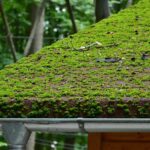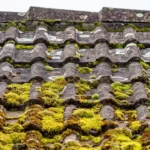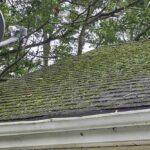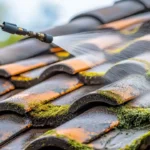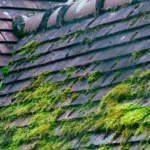Roof moss clogging drains is a common issue many homeowners face. This problem can lead to severe damage if not addressed promptly. Moss may seem harmless, but when it grows unchecked, it can have a significant impact on the health of your roof and drainage system.
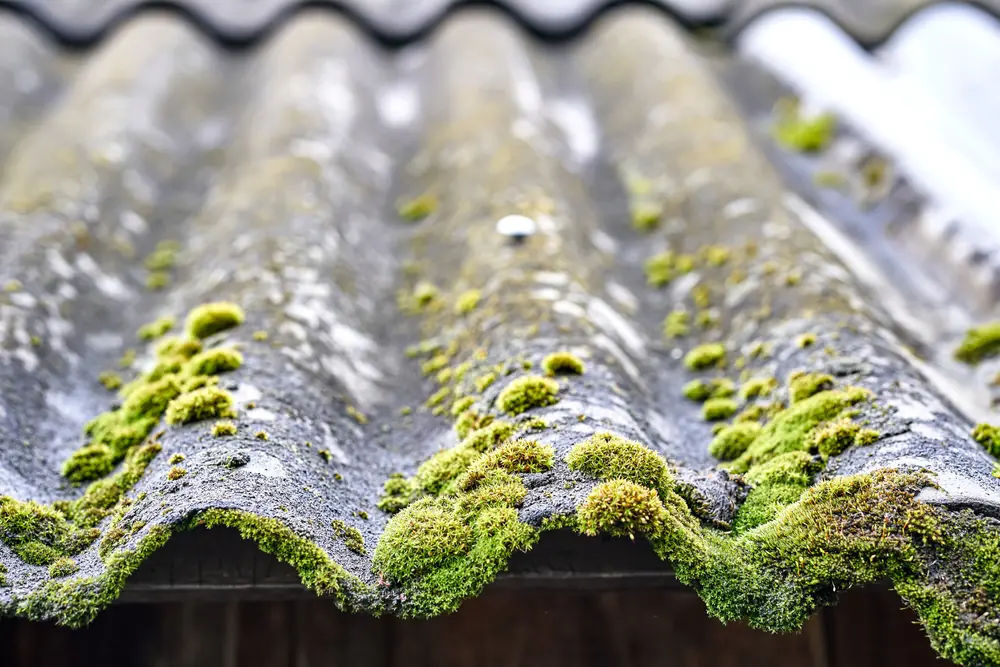
What Causes Roof Moss to Grow?
Moss thrives in damp, shaded environments. Roofs that are shaded by trees or other structures are particularly susceptible. Moisture retention on the roof surface provides the ideal conditions for moss growth. Over time, this moss can become a nuisance, leading to issues like roof moss clogging drains.
The Impact of Moss on Roofs
Moss can damage shingles by lifting them, which allows water to seep underneath. This can result in leaks and structural damage. As moss grows thicker, it can also block water from flowing into the gutters, leading to drainage problems and potential water damage.
Consequences of Clogged Drains
When drains are clogged with moss, water cannot flow properly, leading to overflow and leaks. This can cause water to back up under the shingles, potentially leading to rot and mold. Over time, this water damage can compromise the structural integrity of your roof.
Identifying Moss Growth on Your Roof
Regular roof inspections are crucial. Look for signs of moss growth, such as green patches on the shingles or excessive moisture retention. Early detection can prevent more severe issues down the line.
Preventive Measures
There are several ways to prevent moss from growing on your roof. One effective method is to trim overhanging branches that provide shade. Keeping your roof dry will deter moss growth. Additionally, installing zinc or copper strips can help as these metals inhibit moss growth.
Regular Maintenance
Routine cleaning of your roof and gutters is essential. This helps remove debris that can trap moisture and facilitate moss growth. For more detailed advice on maintaining your roof after moss removal, visit this guide.
DIY vs. Professional Cleaning
While some homeowners may choose to tackle moss removal themselves, it’s often advisable to hire professionals. They have the necessary tools and expertise to remove moss without damaging the shingles. For more information on choosing between DIY and professional cleaning, check out this article.
Cost-Effective Solutions
If you’re on a budget, there are affordable ways to manage and remove moss. This includes using homemade cleaning solutions or simple physical removal techniques. Learn more about budget-friendly tips here.
Long-Term Solutions
To ensure moss doesn’t return, consider long-term solutions such as chemical treatments that inhibit moss growth. These treatments can be applied periodically to keep your roof moss-free.
When to Consider Roof Replacement
In some cases, extensive moss damage may warrant a roof replacement. If the structural integrity is compromised, replacing the roof might be the best option. For insights on whether moss means your roof needs replacing, visit this resource.
The Role of Climate
Climate plays a significant role in moss growth. Regions with high humidity and frequent rainfall are more prone to moss issues. Understanding your local climate can help in planning preventive measures.
Environmental Impact
While moss can be problematic, it also has ecological benefits, such as providing a habitat for small organisms. However, when it comes to roofs, the focus should remain on prevention and control to avoid damage.
Community Efforts in Moss Control
In some areas, community initiatives have been established to educate homeowners about moss control and prevention. These programs can provide valuable resources and support.
Conclusion
Addressing the issue of roof moss clogging drains is crucial for maintaining the health of your home. By understanding the causes, impacts, and solutions, homeowners can take proactive steps to prevent damage and ensure their roofs remain in good condition. Regular maintenance and informed decision-making are key to managing this common problem effectively.
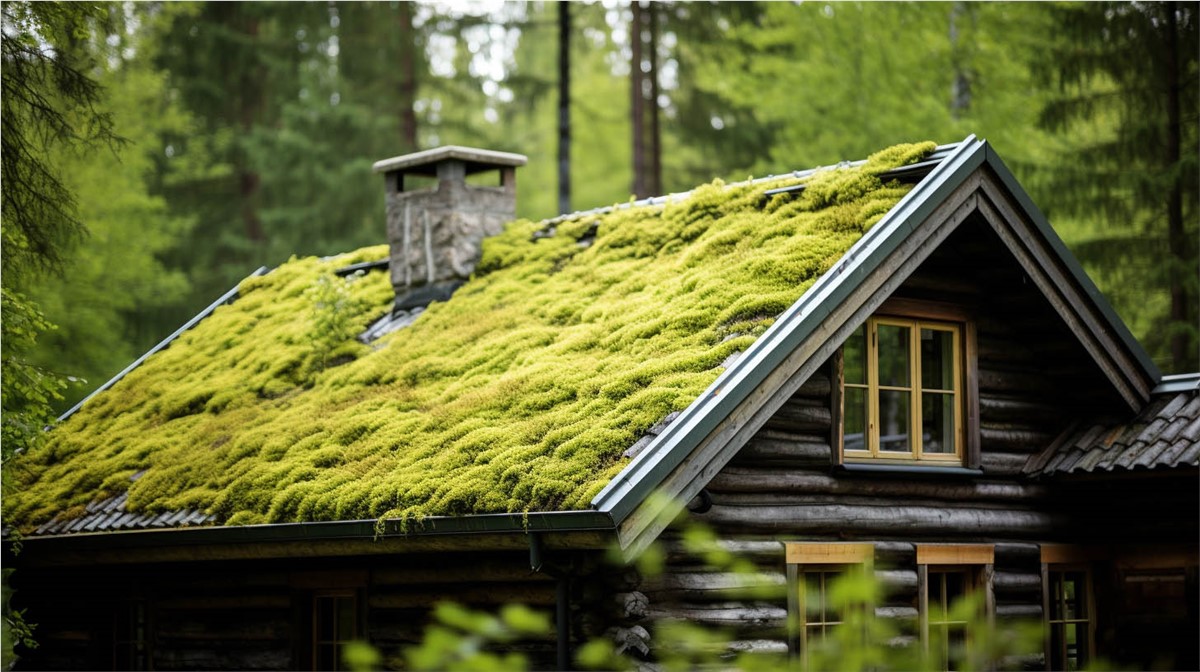
FAQs
How often should I check my roof for moss?
It’s recommended to inspect your roof at least twice a year, especially in the spring and fall, to catch any moss growth early.
Can I use household products to remove moss?
Yes, household products like vinegar can be used to kill moss, but it’s important to ensure they won’t damage your roof materials.
What should I do if I notice water damage?
If you spot signs of water damage, it’s crucial to address the issue immediately to prevent further damage. Consider consulting a professional for an assessment.
This article contains affiliate links. We may earn a commission at no extra cost to you.




